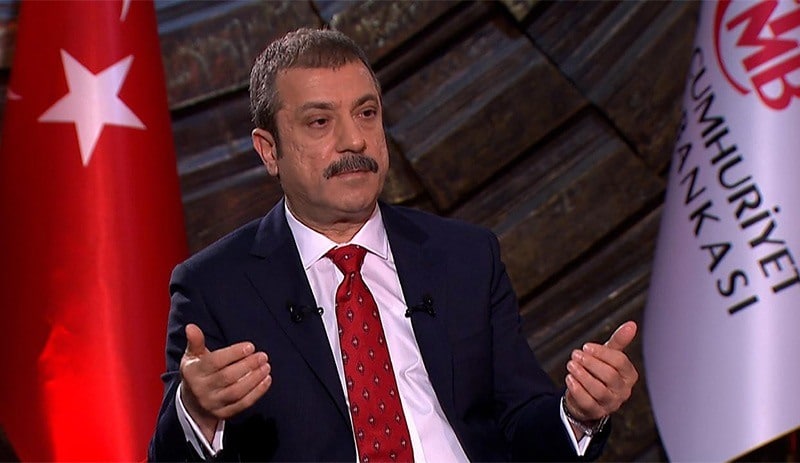

Is it possible that a central bank of a country with a current account deficit for years could make its country with a permanent current account surplus with any policies it would implement?
The importance of this question is crystal clear since Şahap Kavcıoğlu, the Governor of the Central Bank (CBRT) claimed precisely the abovementioned issue in his presentation on October 28.
Exchange rate-exports
The USD equivalent of a good that we produce for 100 liras was 20 dollars when 1 dollar was 5 liras. If the exchange rate is 10 liras, the price will be 10 dollars for foreigners; it will get cheaper. Therefore, the increase in the exchange rate (the depreciation of domestic currency) bolsters our exports.
But as the exchange rate increases, production costs also intensify; transportation costs, energy prices, other inputs used in production, and similar costs are rising, too. Therefore, some of the competitiveness gains provided by the rise in the exchange rate, making our goods cheaper for foreigners, disappears with increasing inflation.
Then, it is the right time to ask: To what extent do the increases in exchange rates affect inflation in Turkey?
Exchange rate-inflation
According to the results of a study published by two former CBRT economists (Hakan Kara and Fethi Öğünç) in 2008, during the high inflation period before the 2001 crisis, a 1% change in the exchange rate had triggered inflation by 0.6 points. By switching to the floating exchange rate system, the effect gradually faded and decreased to 0.3 points. Newer studies calculated this effect as approximately 0.1-0.15 points. As of 2018, inflation started to rise again. In more recent studies, there is evidence that the effect may have increased up to 0.5 points.
Consider this: if a central bank of a country with high inflation explains that it is trying to make its money worthless to increase exports and correct the current account, and further states that inflation will decrease only after the current account is corrected, there will be no anchor for inflation in that country. It is dangerous for a boat with a broken anchor, dragging into the open sea; similarly, inflation drags (rises). In this environment, increases in the exchange rate are reflected in inflation more frequently and at a higher rate.
In short, the competitive advantage that comes with a rise in exchange rate disappears with increasing costs – easy come, easy go.
Exchange rate-imports-import substitution
Of course, the only effect of the exchange rate increase on the current account is not with exports. One has to consider the impact on imports as well. The increase in the exchange rate makes imports more expensive. Well, in this case, will our imports decrease significantly, and will the current account deficit decrease?
An exchange rate increase will reduce imports of consumer goods. Nonetheless, most of our imports are intermediate goods (75.2%) and investment goods (14.6%). Unless we produce domestically, we need to import them for production and investment.
Well, does a rise in the cost of imports cause us to produce at least some of them domestically? That is, can we substitute some of the imports for domestic production? It is not something that happens overnight. It is a result that can only be achieved in the medium term with sound planning within the framework of a new economic program. First of all, there is neither such planning nor program, unfortunately. Second, we are an energy importer. Our last one-year import is 40 billion dollars, and 15.2% of our total imports. There is not much to do about this part of the import.
Exchange rate-risk
There is also one more thing that is as vital as what I have mentioned above: in a country where the monetary policy does not care about inflation and tries to depreciate its currency instead, the risk of that country increases if the corporate sector and the country’s treasury have a substantial amount of debt in foreign currency. The situation deteriorates for those who have foreign currency debt with the jump of the exchange rate. It is apparent that if a firm’s balance sheet deteriorates, the solvency of that firm will be questioned, and consequently, its risk will upsurge. An increase in risk means an increase in borrowing rates. Furthermore, firms that have to roll over their foreign currency debt will suffer from rising borrowing rates. The production and employment levels of hamstrung companies are adversely affected.
Needless to say, a budget deterioration is inevitable under these conditions; a treasury is either forced to cut back on other budget items due to rising exchange rates and borrowing costs or has to endure the ever-increasing budget deficit. Choosing the former means less public service, fewer salary increases, and less investment whereas the latter means higher risk, higher interest rates, and higher deficit. In short, the “high risk-high interest rate-high budget deficit-high risk-high interest rate” spiral.
The acceleration in risk and inflation also surge the demand for foreign currency and gold. A significant amount of which will be kept under the mattress, meaning an increasing part of the savings will not be recorded in the banking system, which is a significant problem for a country with a low level of savings. It should also be noted that the acceleration in gold demand will escalate gold imports and increase the current account deficit.
Inflation-wage-income distribution
With the increase in inflation, the purchasing power of most of the public, who do not have the bargaining power to increase their wages, salaries, and incomes at least as much as inflation, decreases eventually. Poverty increases and income distribution deteriorates.
Just as the increase in the exchange rates raises the input costs and reduces the competitiveness, the production costs rise with a wage and salary increase, made to support the purchasing power (or because the election is approaching), and hinder the country’s competitiveness. We will find ourselves saying: “Back to square one: why did we try to increase the exchange rate then?” Moreover, poverty cannot be prevented in this environment with only “festive” wages and salary increases due to increasing unemployment and the high cost of living.
Unfortunately, implementing a monetary policy aiming at a current account surplus is synonymous with aggravating Turkey’s economic problems under current conditions. Same wish again: I hope I am mistaken.
Last question: Would the welfare of the public increase when that country tries to make their export goods cheaper instead of increasing their productivity? Hoping to address it in the future…

